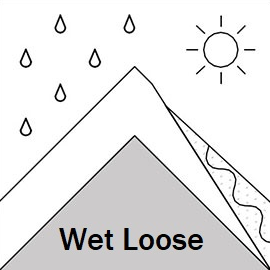Gudauri
Natural avalanches are possible, human-triggered avalanches are likely. Small avalanches in many areas, or large avalanches in specific areas, or very large avalanches in isolated areas.
The next few days will be very warm. Wind slabs have formed near ridges. Wet snow or windslab avalanches - or a rider who hits the 'sweet spot' - could set off a buried weak layer, resulting in potentially large and dangerous slides. It might be spring, but unstable snow still persists around the Gudauri area. Be conservative in your decisions for the next few days.
Forecast issued at: 27 March 2024 22:00
Forecast valid until: 29 March 2024 22:00
Forecaster: Manu Greer
High Alpine
> 2600m
3 Considerable
Dangerous avalanche conditions. Careful snowpack evaluation, cautious route-finding and conservative decision-making essential.
Alpine
2000m - 2600m
2 Moderate
Heightened avalanche conditions on specific terrain features. Evaluate snow and terrain carefully; identify features of concern.
Sub Alpine
< 2000m
2 Moderate
Heightened avalanche conditions on specific terrain features. Evaluate snow and terrain carefully; identify features of concern.
Avalanche Problems
Persistent Slab

Crusts with weak, sugary snow above and below them have been seen in the upper and mid snowpack (below the recent new snow layers). These have failed easily in snow tests. Whumphing has been observed at various aspects and elevations. Large avalanches could be started by a smaller surface avalanche, a heavy load - like a group of skiers or someone jumping - or by an unlucky rider hitting the 'sweet spot' (often an area where the slab is shallow). These problems will be worse at high elevations and in areas where the snowpack is shallower.
| Sensitivity | The specific avalanche problem type is difficult to trigger with a human rider. |
| Distribution | Specific areas, with common characteristics. Evidence for instabilities exists, but it is not obvious and finding it requires careful observations. |
| Time of Day | All day |
| Trend | No change |
| Confidence | Moderate |
Wind Slab

SW, W and NW winds have moved the fresh snow, expect build-ups near ridges and avoid these areas - a windslab avalanche could break a deeper layer resulting in a much larger release.
| Sensitivity | The specific avalanche problem type is reactive to human rider triggers. Easy to trigger with ski cut. |
| Distribution | Specific areas, with common characteristics. Evidence for instabilities exists, but it is not obvious and finding it requires careful observations. |
| Time of Day | All day |
| Trend | No change |
| Confidence | Low |
Loose Wet

When the new snow is hit by sun, or when cloud traps in the heat, loose snow avalanches are likely from mid-morning to late afternoon, especially in steep rocky areas. A rising freezing level will increase the problem. These slides may also be the trigger for a larger slab avalanche on slopes below. Stay out from under steep sunny faces if you see evidence of snow movement, for example 'rollerballs'.
| Sensitivity | The specific avalanche problem type is reactive to human rider triggers. Easy to trigger with ski cut. |
| Distribution | Specific areas, with common characteristics. Evidence for instabilities exists, but it is not obvious and finding it requires careful observations. |
| Time of Day | All day |
| Trend | No change |
| Confidence | Moderate |
Recent Avalanches and Snowpack
Recent avalanche activity:
27 March - multiple size 2 windslabs seen on Lomisa - Miketi ridge E and NE, 2000 - 2900 m, some involved deeper layers.
26 March - multiple large slabs on Sadzele W and NW aspects 2900 - 3200 m, triggered by expolsives - including three size 3 slides.
25 March - Multiple size 3 slabs, N aspect along the ridge E of Arakhveti on or near Mujukhi.
21 March - Natural size 3 storm slab, SW aspect, in Kobe Valley next to the waterfall, likely triggered by loose wet avalanche. Several size 1 to 2 slab avalanches on W and SE aspects with some evidence of step-down between layers.
Glide slabs are active on multiple aspects (more commonly E, S and W), some up to size 3. These are more likely in warm weather but can release at any time - if you see cracks in the snow, do not stop under these areas!
Snowpack:
Around 80 cm of new snow fell between early Friday 22nd and Monday 25th. The new layer is becoming more stable due to mild temperatures, but the previous snowpack has crusts with and weak facet layers in the upper half. Whumphing and failures in snow tests have been seen recently. Wind from SW and W has formed slabs near ridges in sheltered areas. Cornices in some locations are getting large (particularly on Lomisa Ridge); treat them with respect.
Weather
Sunny the next two days with some cloud on Thursday, winds mostly light from the W quarter. Warm temps - freezing levels 2400 m - 2650 m.
Disclaimer
Our avalanche forecasters are internationally qualified and experienced professionals, and data is provided by skilled observers. We encourage you to make your own observations and decisions, without relying solely on our forecast, since any forecast is a generalised 'best guess', and in certain cases it might be inaccurate. We can not be held liable for any actions you take in the backcountry that may result in injury, loss or death.